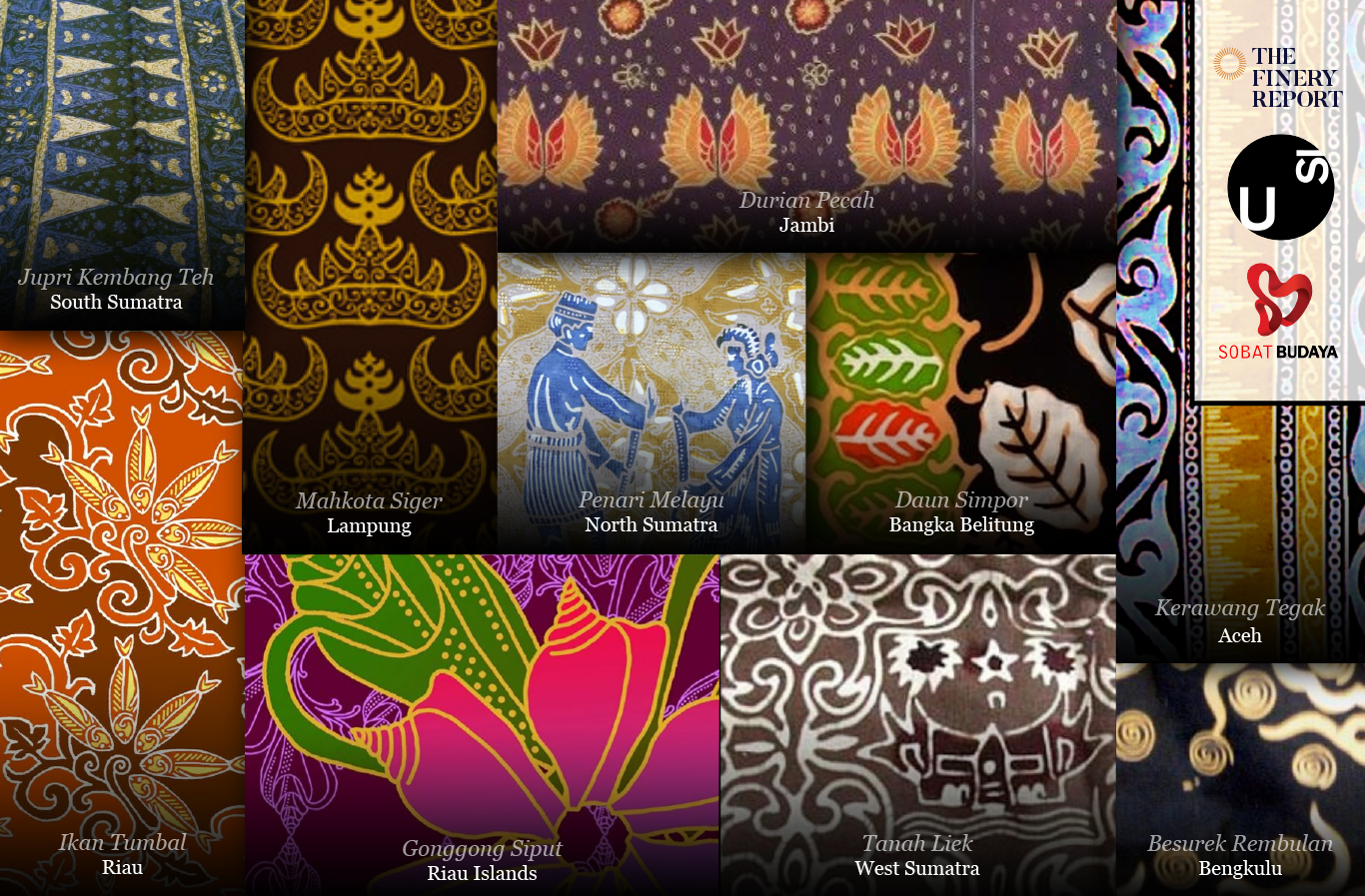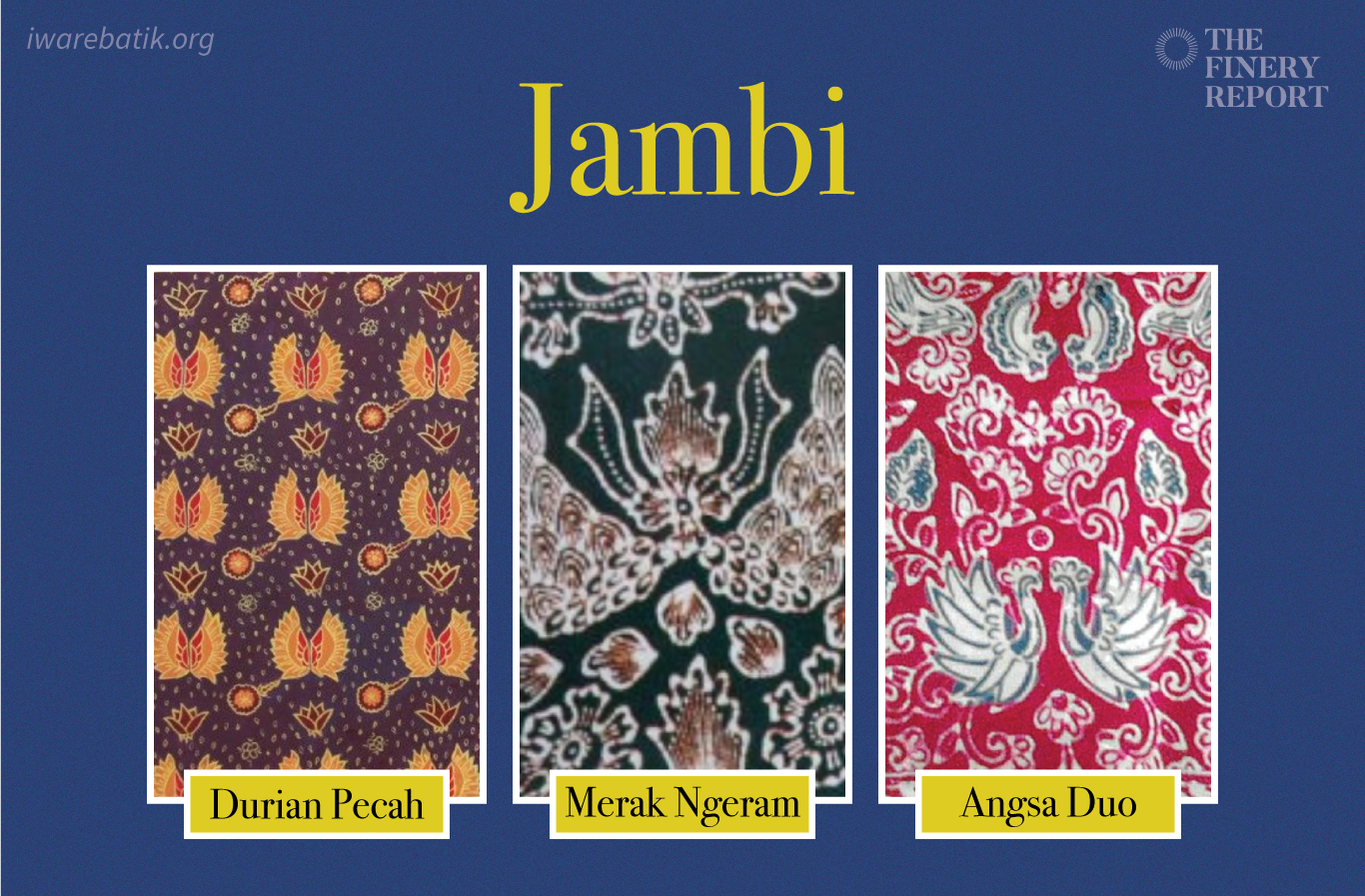Tracing batik in Sumatra
Read in Indonesian
In order to learn more about the history and the motifs of Indonesian batik, TFR reached out to Sobat Budaya, one of the contributors of iWareBatik, a web-based application that is dedicated to record the history of Indonesian batik.
Batik is a dyeing technique that is known worldwide and it is inscribed on the UNESCO Representative List of the Intangible Cultural Heritage of Humanity. Even though the word batik is a Javanese word, the technique itself is known worldwide and embedded in many other cultures and traditions. However, batik has a very profound presence in Indonesia that it is impossible to miss.
The history of batik didn’t start in Indonesia. This technique can be traced down to 5 BC in the form of a wax fabric found in a Pharaoh tomb. This technique spread along the trading route between Egypt and India.
The oldest batik found in Indonesia dates back to 1 BC in Toraja regency. Although the exact time hasn’t been confirmed yet, historians assume that textile production techniques may have been developing all over the world, including the wax-resist dye technique.
The second period started from the 1st to 12th AD. Several archeological findings showed that the wax-resist dyeing method was also used in several Asian regions. In China, the method has been used since the period of Han Dynasty (221–206 BC) and Sui Dynasty (AD 581-618), while in Japan, the method was adopted by ancient textile artisans during the Nara Period (710-785) and Heian Period (795-1185).
In the 8th century, trading between Malacca Strait and Gujarat was built, and they started textile trading. The word batik itself only emerged in the 8th century. According to Kakawin Ramayana, the word batik originated from the word tika, which means ‘holy painting.’
The name of this wax-resist dyeing technique also originates from the Javanese word ambatik, which consists of amba which means ‘to write’ and tik which means ‘dot’ or ‘to make a dot.’ Referring to an ancient Javanese proverb, Mbatik Manah, batik could also mean ‘to paint whole-heartedly.’
In Indonesia alone, almost every region has their own batik. In this article, we compile all of the patterns and designs we can find based on their origins.
DI Aceh
Batik is not a dyeing method that is native to Aceh, but it was reportedly popular through trading activities since the Samudera Pasai Sultanate period. Back then, the nobles would adorn themselves with batik fabrics, leading to the emergence of local crafters. However, the craft declined in the 18th-19th century before it was revived in the 1980s.
Reflecting great local wisdom and strong Islamic values, the patterns of Acehnese batik exhibit non-living beings in the form of geometrical lines, circles and plant tendrils. Some of the notable motifs from Aceh are Ceplok Gayo, Kerawang Tegak, Kerawang Datar and Pintu Aceh.
North Sumatra
In North Sumatra, batik was introduced by Javanese craftsmen. It is not as popular as textile weaving, but there are some local craftsmen who produce batik using local motifs, which are mostly inspired by gorga or carving on the outer walls of traditional Batak houses.
Several sub-districts also introduce batik motifs inspired from Ulos textile patterns, such as hari hara sundung and pani patunda from the Simalungun tribe, Malay motifs, such as pucuk rebung and gorga sitompi from the Toba tribe, as well as mataniari from Mandailing. Some of the notable motifs are Gorga Simeol-meol, Desa Na Ualu, Desa Na Tolu and Penari Melayu.
Riau
Typically, batik from Riau is called Batik Bono of Pelelawan. The name Bono is derived from the Bono Wave of the large Kampar river, a famous surfing destination. This dyeing method was introduced by Javanese settlers in Riau and became the area’s main textile alongside woven textile. The motifs adorning these textiles are usually illustrations of the philosophy of nature and Islamic values. Some of the profound motifs are Awan Larat Riau, Pucuk Rebung Riau, Kasih Tak Sampai and Tabir Tanjung.
Riau Islands
Riau Islands began its history of batik at the end of the 19th century when it was introduced by Javanese batik artisans. Batik craftsmanship in Riau Islands preserves a textile decoration technique specific to the area called Telepuk.
Telepuk is a textile decoration technique that uses bronze or gold dyes. Riau Islands’ batik appears to also embrace the shapes and colours of the marine environment. Some of the notable motifs are Gonggong Siput, Gonggong Beruntun, Ikan Tambal and Tikar Natuna.
West Sumatra
In the ancient time, batik was used in traditional events by nobles, such as Datuak (male leader) and Bundo Kanduang (female leader). The motifs in West Sumatran batik reflect the rural lifestyle and local wisdom of an agrarian society.
They also have a very specific and rare method of dyeing their textile that originates from Minangkabau called Tanah Liek. The process includes soaking the fabric in clay for a week before the dyeing process using natural dyes which produces a unique colour in the fabric. Their notable motifs are Rangkiang and Keluak Daun Pakis.
Bangka Belitung
Batik in Bangka Belitung assumed the name of their traditional textile, Cual. Cual is regarded as the highest form of textile craftsmanship dedicated only for royals. Following the woven textile, batik has been gaining popularity in the last few decades. The motifs mostly illustrate the natural beauty of the area, which provides a wider expression of the local communities towards nature. Some of the popular motifs are Batik Cual, Biji Kopi, Daun Simpor and Daun Lada Hitam.
Bengkulu
Batik Besurek was introduced by Javanese merchants from Demak Kingdom in the 15th century. The name besurek is derived from the Arabic word surek which means ‘to write a holy verse.”’ Besurek batik usually includes Arabic calligraphy and Kaganga ancient letters in its pattern. The motifs also incorporate the design of Rafflesia Arnoldii, the world’s biggest flower that is native to the area. Some of the most notable motifs include Besurek Rafflesia, Besurek Rembulan and Kaganga Tanah Rejang.
Jambi
At the end of the Jambi Sultanate, batik production declined and was only revived in the 1980s. Unlike before when batik was typically worn by nobles, today’s use of batik is no longer restricted to specific social classes. The Arabic and Chinese influences are strong in Jambi, and these are apparent from the motifs adorning their batik. Most Jambi batiks also use natural ingredients, such as woods, fruits and saps. There are about 31 batik motifs recorded from this area, but some of the most notable ones are Durian Pecah, Merak Ngeram and Angso Duo.
Lampung
The batik tradition in Lampung was introduced by Javanese settlers. The dyeing method is preserved along with Tapis, a traditional woven textile native to Lampung. Lampung batik embodies the acculturation of the Buddhist and Islamic cultures. One of the profound examples for this is the Pohon Hayat motif that represents the Tree of Life. Some other profound motifs are Mahkota Siger, Gamolan and Gajah Way Kambas.
South Sumatra
In South Sumatra, the tie-dye technique is often used alongside batik. There are two types of tie-dye batik textiles known in South Sumatra. One is called Gambo, a tie-dye batik textile in which the colours come from natural dye from gambier trees, and the other is called Jumputan, which uses both natural and synthetic dyes to produce bright colours. The dyeing process in both textiles are done manually. Some of the most notable motifs are Biintik Tujuh, Jumputan Bintang and Jupri Kembang Teh.
Learn about the history, cultural implications, the meaning behind every motif, and so much more about Indonesian batik at www.iWareBatik.org























